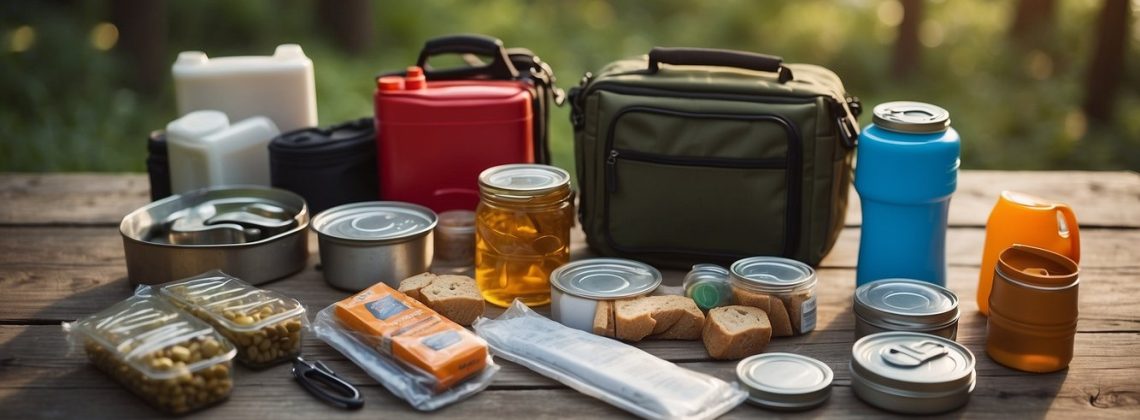
Are you worried about the possibility of a doomsday scenario? Whether it’s a natural disaster, a pandemic, or a societal collapse, being prepared for the worst can mean the difference between life and death. That’s why having a doomsday prep checklist is essential. By taking the time to plan and gather the necessary supplies and equipment, you can increase your chances of survival and protect yourself and your loved ones.
Understanding Doomsday Prepping is the first step in creating your doomsday prep checklist. This involves identifying potential threats and scenarios that could occur in your area. For example, if you live in a region prone to hurricanes, you’ll need to prepare for high winds, flooding, and power outages. If you live in an area with a high risk of earthquakes, you’ll need to prepare for building collapses and infrastructure damage. Once you have a clear understanding of the risks, you can start developing your prepping plan.
Developing Your Prepping Plan involves creating a detailed list of essential supplies and equipment that you’ll need to survive. This includes food, water, shelter, first aid supplies, and tools for communication and transportation. It’s important to consider the specific needs of your family, such as medication and special dietary requirements. By having a comprehensive plan in place, you’ll be better equipped to handle any doomsday scenario that comes your way.
Key Takeaways
- Understanding the potential threats in your area is essential to creating a doomsday prep checklist.
- Developing a comprehensive prepping plan involves identifying necessary supplies and equipment for survival.
- By being prepared for the worst, you can increase your chances of survival and protect yourself and your loved ones.
Understanding Doomsday Prepping
Preparing for a doomsday scenario is not a new concept. People have been preparing for disasters and catastrophes for centuries. The idea behind doomsday prepping is to be prepared for any kind of emergency, whether it is a natural disaster, a collapse of society, or a government breakdown.
The Philosophy of Prepping
Doomsday prepping is based on the philosophy of self-reliance. It is about being prepared for any situation so that you can take care of yourself and your loved ones. The idea is to be self-sufficient and not rely on anyone else for your survival. This means having the necessary skills, knowledge, and resources to survive any situation.
Risks and Threats Assessment
To prepare for a doomsday scenario, you need to assess the risks and threats that you might face. This includes natural disasters such as earthquakes, hurricanes, and floods, as well as man-made disasters such as a collapse of society, economic collapse, or a breakdown of law and order.
Once you have identified the risks and threats, you need to prepare accordingly. This means having a plan in place for each scenario and having the necessary resources to carry out that plan. This includes having enough food, water, and medical supplies to last for an extended period of time, as well as having the necessary tools and equipment to protect yourself and your family.
Overall, doomsday prepping is about being prepared for any situation that might arise. It is about being self-sufficient and having the necessary resources to survive any disaster or emergency. By taking the time to assess the risks and threats that you might face, and by preparing accordingly, you can ensure that you and your family will be safe and secure in any situation.
Developing Your Prepping Plan

When it comes to doomsday prepping, having a plan in place is crucial. Developing a prepping plan involves setting goals and priorities, creating a sustainable prepping budget, and ensuring the safety of your family during an emergency.
Setting Goals and Priorities
The first step in developing your prepping plan is to set goals and priorities. You need to determine what type of emergency you are preparing for, whether it’s a natural disaster or a man-made crisis. Once you have identified the type of emergency, you can then start prioritizing the items you need to prepare for it.
Make a list of the essential items you need for survival, such as food, water, shelter, and medical supplies. Then, determine which items are the most critical and prioritize them accordingly. For example, if you live in an area prone to hurricanes, you may need to prioritize items such as generators, fuel, and hurricane shutters.
Creating a Sustainable Prepping Budget
Developing a sustainable prepping budget is essential to ensure that you have the necessary resources to prepare for an emergency. Start by determining how much money you can allocate to prepping each month. Then, make a list of the items you need to purchase and prioritize them based on your prepping goals.
Consider purchasing items that are versatile and can be used for multiple purposes. For example, a solar-powered generator can provide power during an emergency and can also be used for camping trips. Additionally, consider purchasing items in bulk to save money in the long run.
Ensuring Family Safety
Ensuring the safety of your family should be a top priority when developing your prepping plan. Make sure you have a plan in place for communication during an emergency, such as a designated meeting place or a communication device.
Practice emergency drills with your family to ensure that everyone knows what to do in case of an emergency. Additionally, make sure your family members are trained in basic first aid and self-defense techniques.
In conclusion, developing a prepping plan involves setting goals and priorities, creating a sustainable prepping budget, and ensuring the safety of your family during an emergency. By following these steps, you can be confident that you are prepared for any crisis that may arise.
Essential Supplies and Equipment
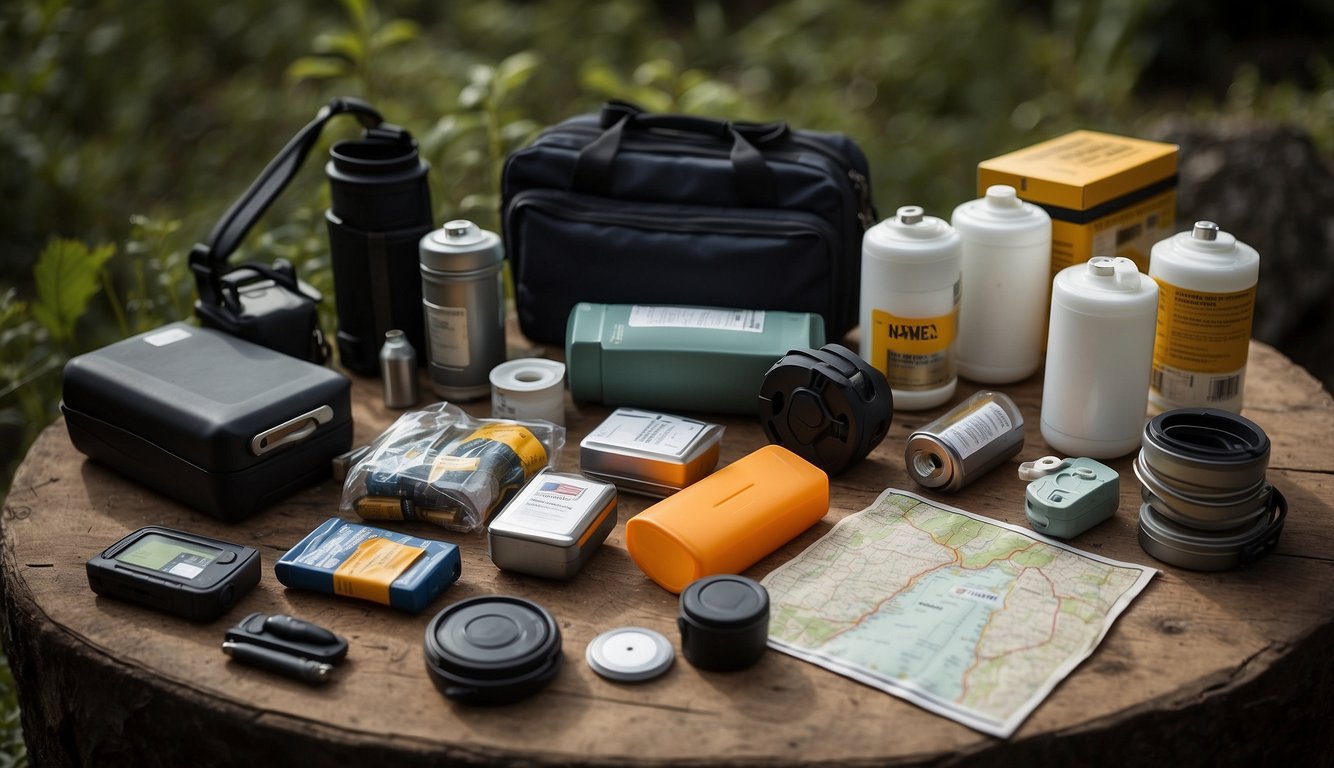
When it comes to doomsday prep, having the right supplies and equipment is crucial. In this section, we’ll cover the essential items you’ll need to survive in the event of a disaster.
Water and Food Storage
Water and food are two of the most important things you’ll need to survive. It’s recommended that you store at least one gallon of water per person per day, and have a supply of non-perishable food that can last for several weeks. Canned food is a great option for long-term storage, as it has a long shelf life and doesn’t require refrigeration. You can also consider stocking up on rice, which is a great source of carbohydrates and can be stored for a long time.
In addition to storing water and food, it’s important to have a way to filter and purify water. A water filter or purification tablets can help ensure that you have access to clean drinking water, even if your supply runs out.
First Aid and Medical Supplies
In the event of a disaster, medical care may not be readily available. That’s why it’s important to have a well-stocked first aid kit on hand. Your kit should include items such as bandages, gauze, ointments, and pain relievers. You should also consider including any prescription medications that you or your family members need.
Shelter and Clothing
Having a shelter to protect you from the elements is important for survival. A tent is a great option for portable shelter, but if you have the means, you may want to consider building a bunker or other more permanent structure. You’ll also need warm clothing to protect you from the cold, as well as rain gear to keep you dry.
Tools and Self-Defense
Having the right tools and equipment can make all the difference in a survival situation. Essential hand tools such as a knife, axe, and saw can help you build shelter and gather firewood. You’ll also need illumination devices such as flashlights and lanterns, as well as communication devices such as a two-way radio.
In addition to tools, you may also want to consider self-defense items such as pepper spray or a firearm. It’s important to remember that owning a firearm comes with a lot of responsibility, and you’ll need to be properly trained in its use and safety.
Power and Lighting
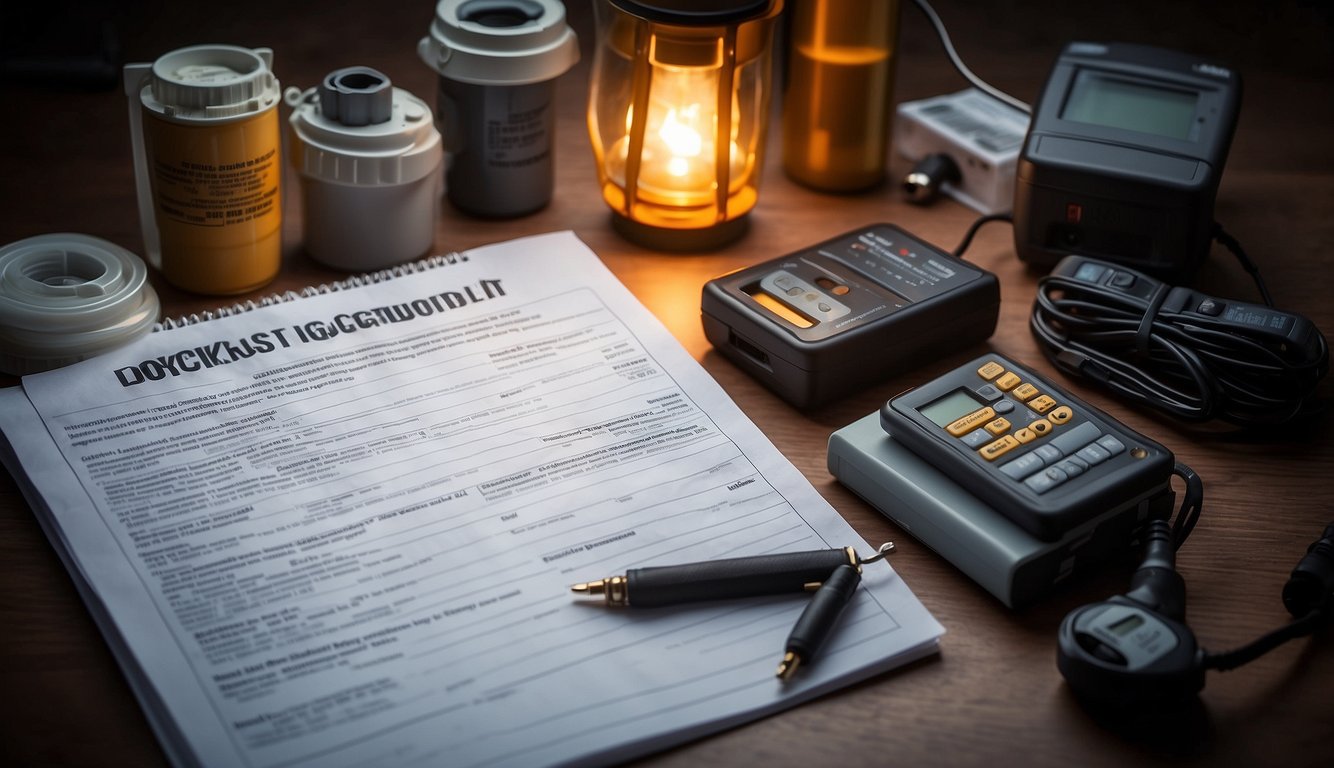
When it comes to doomsday prepping, having a reliable source of power and lighting is essential. In this section, we’ll cover sustainable energy sources and emergency lighting options to help you prepare for any situation.
Sustainable Energy Sources
During a doomsday scenario, electricity may not be readily available. That’s why it’s important to have sustainable energy sources to power your devices and appliances. Here are a few options to consider:
Solar Panels: Solar panels are a great way to harness the power of the sun and generate electricity. They are easy to install and can be used to power a wide range of devices, from small electronics to larger appliances.
Wind Turbines: If you live in an area with consistent wind, a wind turbine can be a great source of sustainable energy. They are typically more expensive than solar panels, but they can generate more power.
Hydroelectric Power: If you live near a river or stream, you may be able to generate electricity using a hydroelectric power system. These systems use the flow of water to generate electricity, making them a great option for off-grid living.
Emergency Lighting Options
In a doomsday scenario, you may not have access to electricity, which means you’ll need to have alternative lighting sources. Here are a few options to consider:
Flashlights: Flashlights are a must-have for any emergency kit. Make sure you have several on hand, along with extra batteries.
Lanterns: Lanterns are a great option for providing ambient light in a room or outdoor area. Look for lanterns that are battery-powered or that can be charged using a sustainable energy source.
Glow Sticks: Glow sticks are a cheap and easy way to provide light in an emergency. They are lightweight and can be used to mark pathways or as a signal for help.
By considering sustainable energy sources and emergency lighting options, you can ensure that you have the power and lighting you need to survive in a doomsday scenario.
Communication and Information
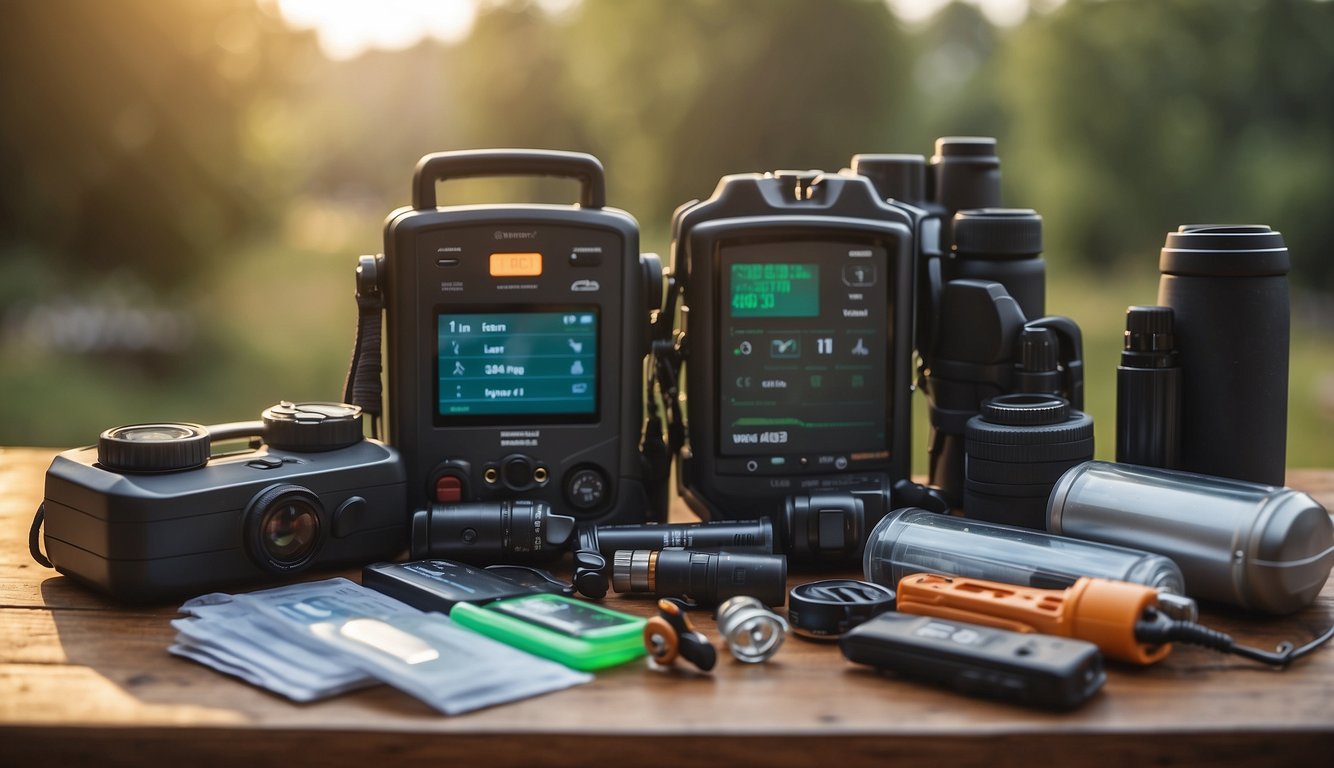
When preparing for doomsday, communication and information are critical components to consider. In the aftermath of a disaster, you may find yourself cut off from the outside world, making it difficult to receive updates and communicate with loved ones. Here are some tips on how to prepare for communication and information during doomsday:
Establishing Communication Plans
Before disaster strikes, it is important to establish communication plans with your family and friends. Discuss a meeting place and a way to communicate with each other in case of an emergency. While cell phones and landlines may not be reliable during a disaster, a ham radio or an emergency radio with NOAA weather tuning capabilities can be a lifesaver. Make sure to include these items in your doomsday survival kit list.
Gathering and Storing Important Information
In addition to communication plans, it is important to gather and store important information in a safe and accessible location. This includes important documents such as passports, birth certificates, and insurance policies. Make copies of these documents and store them in a waterproof container. It is also important to have a map, a compass, and other navigation tools to help you find your way in case GPS is unavailable.
In conclusion, communication and information are crucial components of doomsday preparation. Establishing communication plans and gathering important information can help ensure that you and your loved ones are prepared for any disaster.
Survival Skills Training

When it comes to doomsday prepping, having the right survival skills is crucial. In a post-apocalyptic world, you won’t have access to medical professionals or law enforcement, so it’s important to have some basic training in first aid and self-defense.
Basic First Aid and Medical Knowledge
In an emergency situation, basic first aid knowledge can save lives. You should learn how to treat common injuries such as cuts, burns, and broken bones. Additionally, you should have a basic understanding of how to perform CPR and use an automated external defibrillator (AED).
It’s also important to have some medical knowledge, such as how to identify and treat common illnesses and infections. You should have a well-stocked first aid kit that includes items such as bandages, antiseptic, and pain relievers.
Self-Defense and Weapon Training
In a post-apocalyptic world, there will be no law enforcement to protect you. You must be able to defend yourself and your loved ones. It’s important to have some self-defense training, such as martial arts or boxing. You should also have some weapon training, such as how to use a knife or a firearm.
If you choose to own firearms, make sure you are trained in their safe and proper use. Take classes on how to handle and shoot a handgun or a rifle. You should also know how to clean and maintain your firearms.
Remember, the goal of self-defense is to protect yourself and your loved ones, not to become a vigilante. Use your skills and weapons only when necessary and in self-defense.
In summary, having some basic survival skills is crucial for doomsday prepping. Learn some basic first aid and medical knowledge, as well as self-defense and weapon training. With these skills, you’ll be better prepared to survive in a post-apocalyptic world.
Transportation and Mobility
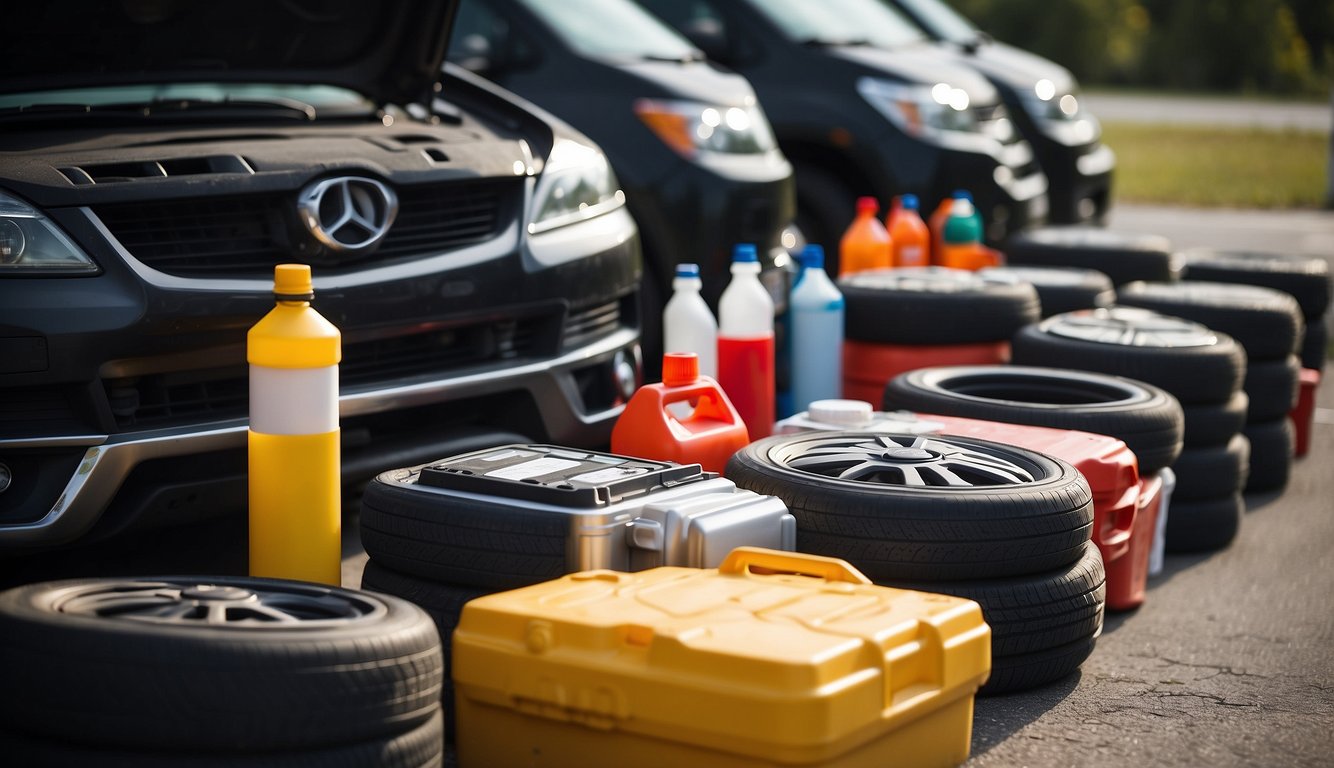
Choosing Reliable Transportation
When it comes to doomsday prepping, having reliable transportation is crucial. You need to be able to get yourself and your supplies to safety quickly and efficiently. Whether you choose to use a vehicle or travel by foot, there are some key factors to consider.
If you plan to use a vehicle, make sure it is in good working condition and has enough fuel to get you where you need to go. Consider packing extra fuel in your bug out bag or having a backup plan in case you run out. It is also important to have a basic understanding of vehicle maintenance and repair in case you encounter any issues on the road.
If you plan to travel by foot, make sure you have comfortable and durable shoes. You may also want to consider investing in a sturdy backpack to carry your supplies. Look for one with multiple compartments and adjustable straps to ensure a comfortable fit.
Packing a Bug Out Bag
A bug out bag is a self-contained kit filled with all the essentials you’ll need to survive the first 72 hours after a disaster strikes. When packing your bug out bag, make sure to include items that will help you stay mobile and agile.
Some key items to consider include a lightweight tent or tarp for shelter, a water filtration system or purification tablets, a multi-tool for various tasks, and a first aid kit for emergencies. You may also want to pack some high-energy snacks and a water bottle to keep you fueled and hydrated on the go.
In addition to these essentials, it is important to pack items that will help you stay safe and secure. This may include a map and compass for navigation, a flashlight and extra batteries for visibility, and a whistle or signaling device to alert others of your location.
Overall, choosing reliable transportation and packing a well-stocked bug out bag are essential components of any doomsday prep checklist. By taking the time to prepare now, you can increase your chances of survival in the event of a disaster.
Maintaining Health and Hygiene
When preparing for doomsday, it’s important to consider your health and hygiene needs. In a post-apocalyptic world, maintaining cleanliness becomes more difficult, and poor hygiene can lead to illness and disease. In this section, we will discuss the key aspects of maintaining health and hygiene during a doomsday scenario.
Sanitation and Waste Management
Proper sanitation and waste management are essential to preventing the spread of disease. You’ll need to have a plan in place for disposing of human waste and garbage. One option is to dig a latrine for human waste and bury it at least 200 feet from your campsite. Another option is to use a portable toilet with disposable bags. Make sure to dispose of all garbage in a secure and sanitary manner to prevent attracting animals and pests.
Personal Hygiene Supplies
In a doomsday scenario, personal hygiene supplies will become scarce. It’s important to stock up on items like soap, toothpaste, and toilet paper. Consider purchasing reusable cloth wipes or a bidet attachment for your toilet to reduce your reliance on disposable products. Additionally, make sure to have a supply of feminine hygiene products, such as pads or tampons, if needed.
When it comes to clothing, make sure to have extra sets of underwear and pants. These items can become soiled quickly and may need to be changed more frequently than usual. Consider purchasing moisture-wicking fabrics that will keep you dry and comfortable in hot and humid conditions.
Overall, maintaining good health and hygiene during a doomsday scenario requires careful planning and preparation. By stocking up on essential supplies and following proper sanitation practices, you can reduce your risk of illness and disease.
Building a Support Network
Preparing for a doomsday scenario can be a daunting task. It is important to build a support network to help you through the process. This support network can include family, friends, neighbors, and even local authorities. Here are some ways to build a support network:
Community Building and Networking
Building a community of like-minded individuals who share your concerns about doomsday scenarios can be a great way to build a support network. Consider joining local groups or organizations that focus on disaster preparedness. These groups can provide valuable information and resources, as well as a sense of community and support.
Another way to build a community is by networking with your neighbors. Get to know your neighbors and discuss your concerns about doomsday scenarios. You may find that some of your neighbors share your concerns and are interested in working together to prepare for a disaster.
Collaborating with Local Authorities
Collaborating with local authorities, such as FEMA or the Department of Homeland Security, can also be a valuable way to build a support network. These organizations have the resources and expertise to help you prepare for a doomsday scenario.
Consider attending local meetings or events hosted by these organizations to learn more about disaster preparedness. You can also reach out to these organizations for advice and guidance on how to prepare for a doomsday scenario.
In conclusion, building a support network is an important part of preparing for a doomsday scenario. By building a community and collaborating with local authorities, you can gain valuable resources and support to help you through the process.
Financial Preparedness
Preparing for a doomsday scenario involves more than just stockpiling food and water. You also need to ensure that your finances are in order. In this section, we’ll cover some important steps you can take to prepare your finances for a potential collapse of society.
Managing Finances and Investments
One of the most important steps you can take to prepare your finances for a doomsday scenario is to manage your finances and investments wisely. This means creating and sticking to a budget, and investing your money in a diversified portfolio that includes a mix of stocks, bonds, and other assets.
It’s also important to have a plan in place for managing your finances if you lose your job or your income is reduced. This may involve cutting back on expenses, finding new sources of income, or tapping into your savings or emergency fund.
Keeping Cash and Tradeable Goods
In a doomsday scenario, cash and tradeable goods could become more valuable than gold or other precious metals. This is because they can be used to barter for goods and services when traditional currency is no longer accepted.
It’s a good idea to keep a supply of cash on hand, as well as tradeable goods like ammunition, fuel, and medical supplies. These items can be used to trade for other goods and services that you may need in a doomsday scenario.
However, it’s important to keep in mind that cash and tradeable goods are only useful if they are kept safe and secure. This means storing them in a secure location and taking steps to protect them from theft or damage.
By taking these steps to prepare your finances for a doomsday scenario, you can help ensure that you and your loved ones are able to survive and thrive in the face of adversity.
Adapting to Long-Term Scenarios
Preparing for doomsday scenarios involves more than just stocking up on supplies. You need to have a plan in place for adapting to long-term scenarios. This section will cover some strategies for long-term food production and rebuilding and resilience.
Long-Term Food Production
In a long-term doomsday scenario, you will need to have a sustainable source of food. This means you will need to learn how to grow your own food. Start by researching the types of crops that are best suited for your area. You will also need to learn how to preserve your food, so it lasts longer.
Consider investing in a greenhouse to extend your growing season. You can also learn how to cultivate edible mushrooms, which are easy to grow and have a long shelf life. Raising chickens or other livestock can also provide a sustainable source of food.
Rebuilding and Resilience Strategies
In the aftermath of a doomsday scenario, you will need to have a plan in place for rebuilding and resilience. This means you will need to learn how to repair and rebuild structures, as well as how to create new ones.
Consider learning basic carpentry skills and investing in tools like hammers, saws, and drills. You will also need to learn how to work with different materials like wood, concrete, and metal.
In addition to rebuilding, you will also need to develop resilience strategies. This means learning how to adapt to a new way of life. You may need to learn new skills like hunting, fishing, or trapping. You will also need to learn how to work with others in your community to rebuild and create a new way of life.
Overall, adapting to long-term scenarios requires a combination of sustainability, rebuilding, farming, and livestock skills. By developing these skills, you can increase your chances of surviving and thriving in a doomsday scenario.
Frequently Asked Questions
What are the essential components of a comprehensive emergency preparedness kit?
A comprehensive emergency preparedness kit should contain essential items for survival during a disaster. The kit should include items such as food, water, shelter, first aid supplies, and tools. Other items that can be included in the kit are a flashlight, radio, and extra batteries. It is also important to have a map of the area and a whistle for signaling for help.
How can one create a sustainable food supply for long-term disaster survival?
Creating a sustainable food supply for long-term disaster survival requires planning and preparation. One way to do this is by storing non-perishable foods that have a long shelf life, such as canned goods, dried fruits, and grains. Another way is by growing your own food, either in a garden or using hydroponics. It is also important to learn how to preserve food, such as canning, pickling, and dehydrating.
What are the top ten items to include in a basic survival kit?
A basic survival kit should include items such as a knife, fire starter, water filter, shelter, first aid kit, map, flashlight, radio, and extra batteries. Other items that can be included are a whistle, compass, and signaling device.
How should a family of four tailor their prepper checklist to ensure adequate supplies?
A family of four should tailor their prepper checklist to ensure that they have enough supplies for each member. They should consider the age and needs of each family member, such as infants and elderly members. They should also consider the length of time they will need to survive and the potential disasters in their area.
What is the first and most critical purchase for a new prepper?
The first and most critical purchase for a new prepper is a water filter. Water is essential for survival and it is important to have a reliable source of clean water. A water filter can remove harmful contaminants from water sources, making it safe to drink.
Which items are the most crucial to stockpile for an extended emergency situation?
The most crucial items to stockpile for an extended emergency situation are food, water, and medical supplies. It is important to have a supply of non-perishable foods that have a long shelf life, such as canned goods, dried fruits, and grains. Water should be stored in containers that are safe for long-term storage. Medical supplies should include first aid supplies, prescription medications, and over-the-counter medications. Other items that can be stockpiled include hygiene supplies, tools, and shelter materials.

Leave a Reply